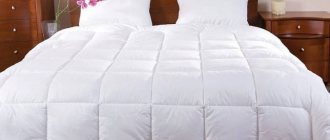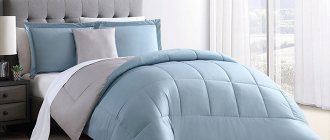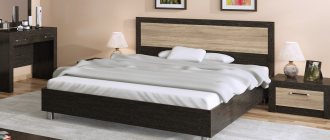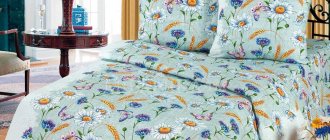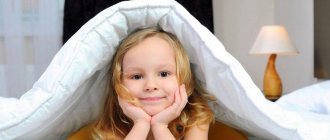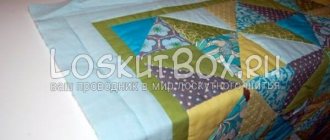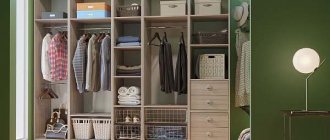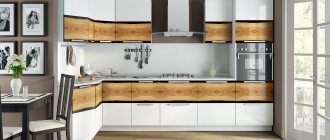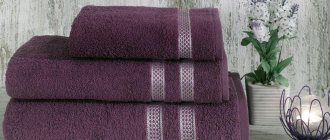Every housewife pays special attention to the choice of bedding. A good night's sleep is vital, and it's most comfortable to rest under a good quality blanket when it's cool in the summer and warm in the winter. Choosing a suitable sleeping set is not difficult; you just need to take into account the wishes of your loved ones and your own preferences. The modern textile industry offers such a wide range that it is easy to get confused, but if you approach the purchase with information that is already known in advance, such as the size of bed linen, it will be much easier to decide.
Popular models of one-and-a-half blankets
The one and a half size blankets are the most popular. Not only single people buy them, but also married couples, especially when it is more convenient for partners to sleep under a personal blanket. In such cases, purchase family bedding sets with two duvet covers. You can find out what sizes the euro and double blankets come in by following the link.
It is convenient to buy a one-and-a-half blanket for children, especially those who have already grown a little out of children's sets. The so-called teenage sleeping sets also include a duvet cover of appropriate sizes. If we take into account all of the above, it is not surprising that one-and-a-half bed linens are presented in the widest range, and the same can be said about blankets. And the dimensions of one-and-a-half bed linen can be found in this material.
A set of towels for men is a great holiday gift for anyone.
What are the features of Askona mattresses for children?
Sizes of children's flannelette blankets: here.
In order for you to be able to choose a suitable one-and-a-half-size blanket, you can use the standards of such products, which, among other things, regulate the required sizes of such products. How these parameters were calculated is a separate topic; we are now only interested in the dimensions of commercially available goods.
Features of choosing a duvet cover
Whatever size of one-and-a-half duvet the buyer is interested in, he must in any case make sure that the duvet cover has some reserve left. To avoid mistakes, you need to remember the following: the dimensions of the duvet cover should be 2-3 cm larger than the blanket on all sides.
If this condition is met, you can be sure that you will not encounter difficulties when tucking the 1.5-sleeper flannelette blanket into the duvet cover. Regardless of whether you are going to buy bed linen in a store or sew it yourself, you should not forget that natural fabrics begin to shrink after the first few washes.
Standard sizes
The most popular set of bed linen is called “Euro one and a half”. Its size is 155 × 215 cm
The standards for one-and-a-half-bed sets are as follows:
- domestic manufacturers are accustomed to a different standard, namely 140 × 205 cm;
- relatively rare ones include 160 × 205, 160 × 215, 160 × 220 and even 172 × 205 cm; when purchasing, you should take into account possible problems with purchasing suitable sets.
The standard width of a semi-truck can be considered a line of sizes from 140 to 160 cm. The length can be found from 205 to 220 cm. When purchasing a new blanket, you should take into account the sizes of existing duvet covers, and in case of drastic changes, also purchase suitable bedding sets at the same time.
Bed linen manufacturers
In textile stores you can find products from a variety of manufacturing companies; the undisputed leaders in the sale of such goods are Turkish companies. Excellent quality and premium goods are represented by Italy and France, and Chinese products will be the most common. Domestic manufacturers are not lagging behind, as well as Ukrainian ones, with an assortment of European products.
The following information about the most recognized leaders in the textile industry will help you choose the appropriate option. All these products are guaranteed to be distinguished by the quality of tailoring and environmentally friendly raw materials; the difference can only be noticed by comparing the materials used. The cost will mainly depend on this, but the final choice, of course, is yours.
Blankets made of synthetic materials
The main advantages of synthetic blankets are their high wear resistance and affordable price. Thanks to the variety of synthetic fibers, products attract an abundance of design options, structure and colors of the fabric.
Made from acrylic fiber
Externally, blankets made of acrylic thread resemble woolen ones: quite soft to the touch, with a pleasant fluffiness, light and breathable. The color range is extremely varied, the design is predominantly traditional: a rectangular woven panel with a long fringe. Acrylic blankets are easy to wash and dry quickly; they can be machine washed, however, over time, pellets may appear on the surface, spoiling the appearance.
Acrylic fibers do not absorb moisture, so using the blanket as a blanket is not recommended. However, the disadvantages of synthetic fiber are made up for by their low cost. This is an ideal option for a picnic, cottage or trip: even if the fabric gets very dirty, it will not be difficult to wash it.
Made from microfiber
Polyamide or polyester fiber, called microfiber (microfiber), has a special fluffy structure that provides excellent hygroscopicity, softness and comfortable warmth. Light, cozy and inexpensive, the blanket is extremely durable and can withstand repeated washing in the machine, and dries quickly after spinning. It can be used as a blanket or bedspread, or taken on the road or to the country house. However, frequent washing leads to loss of appearance, although the product still remains quite warm and soft.
Made from fleece
Voluminous and lightweight fleece is excellent for making blankets. It is quite durable, does not fade in the sun, retains heat well, and washes well. If necessary, a fleece blanket can be dry cleaned, steamed or ironed. Fleece fiber is made from polyester, so it does not cause allergic reactions even in sensitive people. The material is prone to the accumulation of static charges and therefore requires periodic treatment with an antistatic agent. A fleece blanket can be used as a blanket, used to cover beds, and taken with you on the road or to the country house.
Faux fur
The undoubted advantages of faux fur blankets include, first of all, their luxurious appearance, soft structure and high wear resistance. The products are produced in a wide variety of colors and textures, imitating the play of shades of natural fur or being a plain fabric. In addition, fur blankets are very warm and relatively light.
Unlike natural furs, artificial pile is not afraid of moths and moisture, and can be washed infrequently by machine. The disadvantage of the products is their tendency to electrify. In addition, long pile attracts and collects dust, so the blanket needs frequent beating and vacuuming. A fur blanket looks great as a bedspread or a spectacular throw on a sofa or chair.
Knitted blankets
As a rule, synthetic or blended yarn is used to make knitted blankets. Typically, acrylic or polyester fiber is used for this, since these synthetic threads are structurally similar to natural wool. The finished product looks very cozy and attractive and retains heat perfectly. A knitted blanket is thrown over the bed instead of a bedspread, draped over a sofa or chair, and wrapped in it when it gets cold. You should not take a knitted blanket on a trip or on a picnic, as frequent washing is detrimental to it.
Prices
The cost of a good one-and-a-half-size blanket varies depending on the material used in its manufacture, the type of filling, the manufacturer's brand name and brand reputation . Before purchasing, you should immediately understand that cheap goods in most cases turn out to be fakes.
The estimated cost of popular brands is presented in the table. For ease of choice, the cost is indicated for different seasons of use of one-and-a-half blankets.
Tables: cost of summer, winter or warm and demi-season
Estimated cost of summer one-and-a-half blankets
| Manufacturer | Case material | Filler material | Size, cm. | Cost from, $ |
| Iglen (Ukraine) | Cotton (teak) | Pooh | 140 × 205 | 120 |
| 160 × 215 | 129 | |||
| Iglen (Ukraine) | Cotton (satin) | Cotton | 140 × 205 | 50 |
| 160 × 215 | 56 | |||
| Billerbeck (Ukraine–Germany) | Cotton (satin) | Bamboo | 140 × 205 | 86 |
| 155 × 215 | 95 | |||
| Billerbeck (Ukraine–Germany) | Cotton (satin) | Viscose | 140 × 205 | 44 |
| 155 × 215 | 49 | |||
| Billerbeck (Ukraine–Germany) | Cotton | Sheep's wool | 140 × 205 | 35 |
| 155 × 215 | 68 | |||
| Merkys (Lithuania) | Cotton | Sheep's wool | 140 × 205 | 38 |
| Merkys (Lithuania) | Microfiber | Holofiber | 140 × 205 | 26 |
| 155 × 215 | 33 | |||
| Mir Son (Ukraine) | Cotton (cambric) | Pooh | 140 × 205 | 185 |
| 155 × 215 | 204 | |||
| Mir Son (Ukraine) | Cotton (cambric) | Sheep's wool | 140 × 205 | 29 |
| 155 × 215 | 33 | |||
| WOT (Estonia) | Cotton 70%, linen 30% | 140 × 200 | 32 | |
| Runo (Ukraine) | Cotton (calico) | Cotton | 140 × 205 | 22 |
| 155 × 210 | 24 |
Estimated cost of winter one-and-a-half blankets
| Manufacturer | Case material | Filler material | Size, cm. | Cost from, $ |
| Iglen (Ukraine) | Cotton (teak) | Pooh | 140 × 205 | 140 |
| 160 × 215 | 155 | |||
| Iglen (Ukraine) | Jacquard | Wool | 140 × 205 | 63 |
| 160 × 215 | 70 | |||
| Billerbeck (Ukraine–Germany) | Cotton 60%, viscose 38%, silver 2% | Anti-allergenic fiber | 140 × 205 | 65 |
| 155 × 215 | 74 | |||
| Billerbeck (Ukraine–Germany) | Cotton (calico) | Anti-allergenic fiber | 140 × 205 | 33 |
| 155 × 215 | 36 | |||
| Billerbeck (Ukraine–Germany) | Cotton (satin) | Camel's wool | 140 × 205 | 164 |
| 155 × 215 | 205 | |||
| Muhldorfer (Germany) | Cotton | Goose down 70%, feather 30% | 140 × 210 | 192 |
| 155 × 220 | 210 | |||
| Muhldorfer (Germany) | Cotton | Silicone | 155 × 220 | 130 |
| Othello (Türkiye) | Cotton (satin) | Goose down 70%, feather 30% | 155 × 215 | 226 |
| Goose down 15%, feather 85% | 39 | |||
| Penelope (Türkiye) | Cotton (satin) | Goose down 90%, feather 10% | 155 × 215 | 413 |
| Goose down 60%, feather 40% | 133 | |||
| Penelope (Türkiye) | Silk 60%, cotton (satin) 40% | Goose down 90%, feather 10% | 155 × 215 | 408 |
| Penelope (Türkiye) | Cotton (satin) | Sheep's wool | 155 × 215 | 179 |
| Cashmere | 355 | |||
| Penelope (Türkiye) | Microfiber | Polyester fiber | 155 × 215 | 56 |
| Runo (Ukraine) | Cotton (calico) | Sheep wool 50%, PE 50% | 140 × 205 | 22 |
| 172 × 205 | 27 | |||
| Runo (Ukraine) | Cotton (percale) | Artificial swan down | 140 × 205 | 31 |
| 172 × 205 | 36 |
Estimated cost of demi-season one-and-a-half blankets
| Manufacturer | Case material | Filler material | Size, cm. | Cost from, $ |
| Iglen (Ukraine) | Jacquard Damask | Wool | 140 × 205 | 58 |
| 160 × 215 | 65 | |||
| Iglen (Ukraine) | Cotton (teak) | Wool | 140 × 205 | 55 |
| 160 × 215 | 61 | |||
| Billerbeck (Ukraine–Germany) | Cotton 60%, viscose 38%, silver 2% | Anti-allergenic fiber | 140 × 205 | 58 |
| 155 × 215 | 64 | |||
| Billerbeck (Ukraine–Germany) | Cotton | Anti-allergenic fiber | 140 × 205 | 30 |
| 155 × 215 | 34 | |||
| Billerbeck (Ukraine–Germany) | Cotton | Cotton | 140 × 205 | 31 |
| 155 × 215 | 35 | |||
| Muhldorfer (Germany) | Cotton | Goose down 70%, feather 30% | 140 × 210 | 155 |
| 155 × 220 | 172 | |||
| Muhldorfer (Germany) | Cotton | Goose down 90%, feather 10% | 155 × 220 | 342 |
| Othello (Türkiye) | Microfiber | Polyester fiber | 155 × 215 | 33 |
| Penelope (Türkiye) | Bamboo 60%, cotton 40% | Microfiber 70%, bamboo 30% | 155 × 215 | 163 |
| Penelope (Türkiye) | Cotton (satin) | Microgel | 155 × 215 | 113 |
| Penelope (Türkiye) | Silk 60%, microfiber 40% | Polyester balls 60%, silk 40% | 155 × 215 | 143 |
| Penelope (Türkiye) | Cotton | Goose down 90%, feather 10% | 155 × 215 | 517 |
| Runo (Ukraine) | Cotton (teak) | Wool | 140 × 205 | 23 |
| 155 × 210 | 26 | |||
| Runo (Ukraine) | Cotton (calico) | Wool | 140 × 205 | 30 |
| 155 × 210 | 33 |
Nuances when purchasing
Some tricks will help you visually determine the quality of a blanket and not get deceived, as well as how to avoid common mistakes when purchasing, and also see reviews: which blanket is better to choose.
How to choose a quality blanket:
- Sewing assessment: the filler should not appear in the seams and generally reveal itself in any way, the lines are even, preferably a cassette stitch (for feather versions) or a diamond stitch (for all others). The filler can be padding polyester or holofiber.
- Verification of documents: in fact, everyone knows that it is necessary to ask for a quality certificate, but few have seen it in person. It is also necessary to pay attention to the label and packaging of the product itself: a reputable manufacturer always takes care of these little things to ensure that the product is safe.
Some companies are still trying to make the packaging more elegant in case of purchase as gifts.
Avoid:
- damaged or frankly homemade packaging;
- unclear labels where it is impossible to recognize the manufacturer’s brand and basic information about the product;
- care recommendations should also be comprehensive.
Choose any color you like, the main thing is to check the quality of the coloring.
Regarding the size: there is no need to choose non-standard blanket options, so as not to have to worry about finding suitable sleeping sets later. Rarely, there are complaints about the blanket’s too rich color, which can show through through light-colored linen; in order to avoid such embarrassment, it is better to think about this factor.
There are many models of cozy and high-quality one-and-a-half blankets on sale. All sizes of a one-and-a-half duvet cover can be viewed in this article. The material used for sewing, the type of filling and seasonality can be selected to suit every taste and financial capabilities. An important selection criterion will be the dimensions of the blanket, which are best chosen from the standard line so as not to create difficulties when purchasing bed linen.
You can see photos about the types of flannelette blankets available here.
Rules for choosing a baby blanket
- The product should be light, as if weightless.
- Excellent air permeability, absorb moisture, releasing it into the external environment.
- Possess a high level of hygroscopicity.
- Correspond to the season and time of year in terms of warmth.
- Do not provoke the development of allergies.
- The product should be easy to wash, clean, and dry quickly.
- The bedding must be suitable for the child.
Two blankets are bought for the child - for winter and summer, which helps to avoid hypothermia and overheating. What kind of filler is inside the blanket also matters. The main materials used for children's blankets include:
- Pooh. Suitable for apartments where the air temperature is not higher than +18. Duvets are made from goose, swan or loon down, which are lightweight, perfectly absorb moisture and allow air to pass through.
- Wool. Used in houses and apartments where it is cool or has high humidity levels. Wool absorbs moisture and sweat, so your baby will always be dry while sleeping. Wool blankets are made from camel, sheep and llama wool.
- Bamboo. Lightweight, high-quality, universal material that allows air to pass through and absorbs moisture. Bamboo blankets are antibacterial and anti-allergenic.
- Sintepon. An artificial filler from which blankets are often made. Suitable for dry rooms where it is cool. Sintepon does not contribute to the development of allergies, does not accumulate dust, and extinguishes static electricity. At the same time, the material is somewhat worse than down and bamboo allows cooler air to pass through.
- Holofiber. Recently used for filling blankets, as it provides temperature regulation, normal air circulation, warms in winter, cools in summer.
- Cotton. It is considered a heavy material, which is why it is used less often for sewing blankets than wool, down or bamboo. In addition, cotton becomes confused during washing.
- Linen. An expensive natural material with many advantages. Firstly, it does not cause allergies. Secondly, it protects against bacteria and moisture. Thirdly, it maintains normal temperature conditions.
- Tale. Blankets made from flannelette are very light, pleasant, and warm well in winter. Flannelette blankets do not require special care, serve for a long time, and do not wear out.
- Fleece or calico. Blankets and blankets, which are universal products, are made from such materials.
When choosing a blanket for babies, it is worth considering several parameters, the main one of which is the material. Linen and cotton products are suitable for the warm months of the year; plaids, woolen and down blankets are suitable for winter and autumn.
Table of standard sizes of baby blankets
| Size | Age |
| 100 to 135 | For babies up to 3 years old |
| 100 to 140 | For babies up to 3 years old |
| 90 to 90 | For babies |
| 100 to 150 | For children over 3 years old |
| 110 by 140 | For children from 3 years old |
| 120 by 140 | For children from 3 to 12 years old |
| 142 by 210 | For teenagers |
| 145 by 210 | For teenagers |
When buying blankets, preference is given to manufacturers who have long been familiar to consumers with the quality of their products. This provides excellent sleep, health, protection from overheating and hypothermia. The choice of blanket size also depends on a person’s personal preferences.
